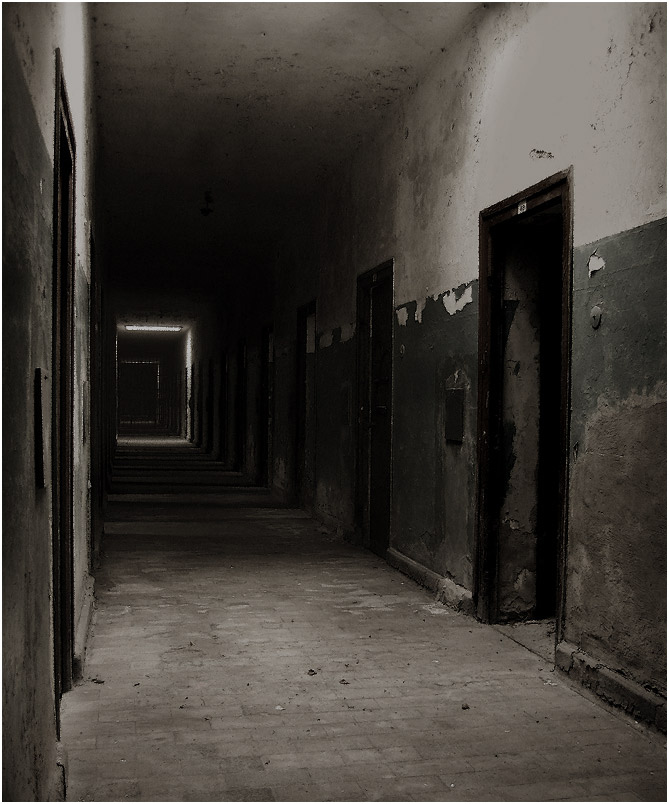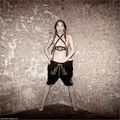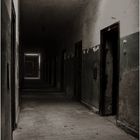Concentration Camp Dachau - the Bunker
_____________________________________________________________________________________
http://www.kz-gedenkstaette-dachau.de/
The Dachau concentration camp complex encompasses both the actual main camp in Dachau itself as well as a number of subsidiary camps (approx. 170) of varying size spread across the entire area of southern Germany and extending into Austria.
The main camp comprised of the actual prisoners' camp, the SS area as well as various subsidiary camps, such as the so-called plantation, the shooting range at Hebertshausen, and the burial grounds for concentration camp prisoners, now the Concentration Camp Memorial Cemetery Dachau-Leitenberg.
On March 21 1933, Heinrich Himmler ordered that a concentration camp be erected at Dachau. This was the beginning of a terror system in Dachau that cannot be compared with any other state persecution and penal system. In June 1933, Theodor Eicke was appointed commandant of the concentration camp. He developed an organizational plan and rules with detailed stipulations, which were later to become valid for all concentration camps. Also from Eicke came the division of the concentration camp into two areas, namely the prisoners' camp surrounded by a variety of security facilities and guard towers and the so-called camp command area with administrative buildings and barracks for the SS.
Later appointed to the position of Inspector for all Concentration Camps, Eicke established the Dachau concentration camp as the model for all other camps and as the murder school for the SS.
The camp prison, the so-called bunker, was built during the new construction of the camp in 1937/38 and replaced earlier prison buildings.
It was used above all to punish prisoners and to extort confessions.
Also imprisoned here in the last few years of the war were some of the so-called special prisoners who as hostages were provided with better conditions. In February 1945, Georg Elser, who had attempted to assassinate Hitler, became one of these special prisoners; the SS murdered him shortly before liberation.
Today, first-hand accounts from bunker prisoners are to be found in the individual cells.
_____________________________________________________________________________________
Canon digital IXUS 50
_____________________________________________________________________________________










Patrick B. Parenteau 20/03/2006 20:34
Yasemin.In answer to your question, "concentration camps" were prisons established throughout Poland and Germany during the second world war. Not only soldiers, but politcal, ethnic and social refugees from within Germany and the conqured countries were assembled and used for forced labour or systematically exterminated by the millions. Known as "death camps" these sites were witness to some of the most horrific human behavior - there is nothing "nice" about this architecture.
Patrick
Patrick B. Parenteau 20/03/2006 20:24
I find this stark image more imposing than the concentration camp footage showing dying or decomposing bodies. The fear and psychological terror that lurked behind those doors must have been overwhelming. Sad to know that places like this are active today in various countries around the world.Patrick
Arno M 20/03/2006 18:39
jaaa, genau so muss es aussehen - sehr gut gemachtlg,
Arno
KONNIs digitale Fotokiste 28/02/2006 22:13
das ist gut, guido!lg konni
die Maike 28/02/2006 11:33
dieser Aufnahmestandpunkt gefällt mir sogar noch besser. Absolut beklemment, da hinten, die versperrte Tür, die ein Ausweg sein könnte, aber eben doch keiner ist.